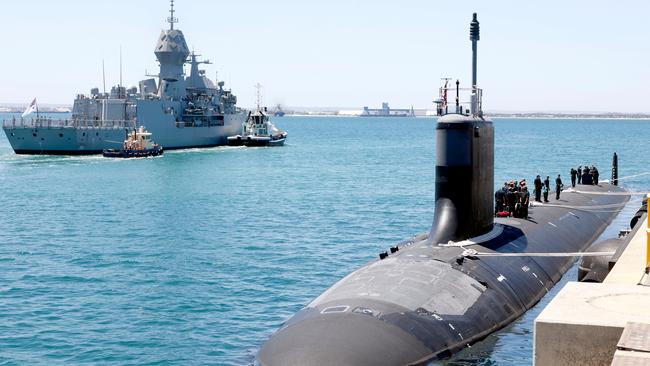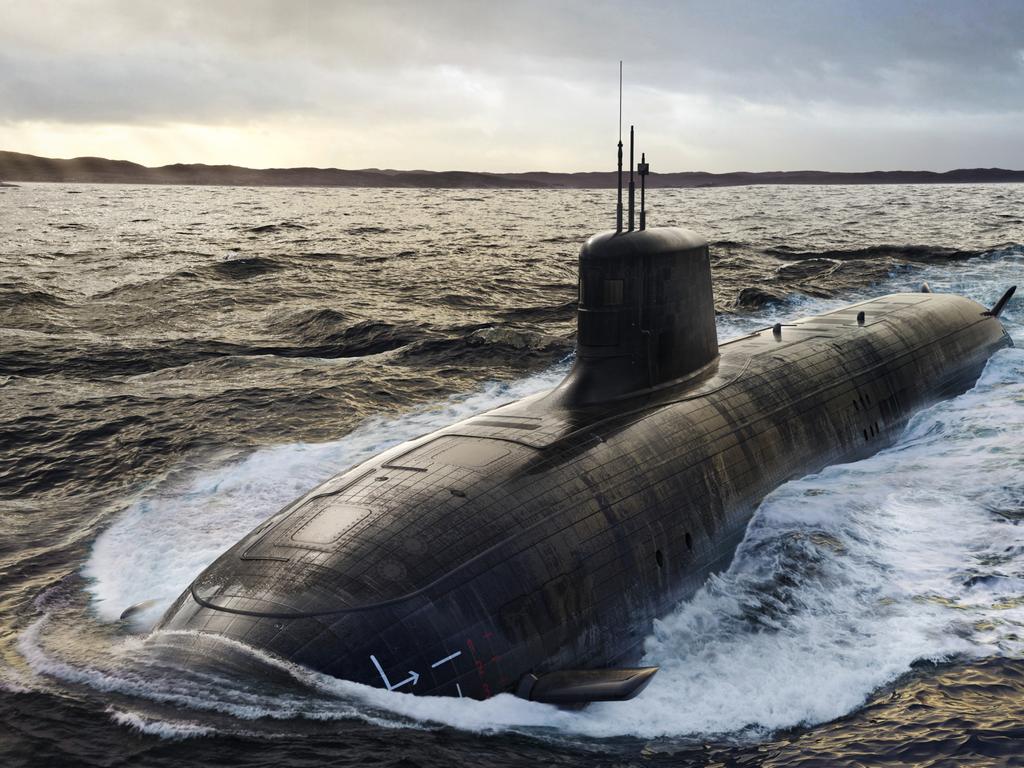How the AUKUS submarines will work, armed with Tomahawk missiles and able to evade China
The Virginia-class subs and subsequent AUKUS-class boats will be able to lurk quietly off China’s main submarine base.

Australia will operate three of the quietest, longest-range submarines available by the late 2030s, armed with Tomahawk missiles that can hit land or maritime targets from at least 1500 km.
The Virginia-class subs and subsequent AUKUS-class boats will be able to lurk quietly off China’s main submarine base at Hainan Island, or near key choke points in the East and South China Seas, able to intercept Chinese subs and surface ships or launch strikes on the Chinese mainland.
Australia has never before possessed such a capability. As Richard Marles says, it will place an additional “question mark” into the strategic calculations of potential adversaries, by which he means China.
It’s no coincidence that China’s President Xi Jinping pre-empted the official AUKUS announcement by vowing to build the People’s Liberation Army into a “great wall of steel”.
But as Australia will initially operate subs from the current US fleet, there won’t be a net increase in the Western allies’ nuclear-powered submarine capability until the first AUKUS-built boats roll off the production line. For Australia, that will happen in about 2042, while the first British-built AUKUS boat is scheduled for completion before the end of the 2030s.
The Virginia-class subs will come equipped with 12 vertical launch cells and four torpedo tubes each. They are 7925 tonne monsters that can travel at speeds of more than 25 knots (46 km/h) – about three times as fast as Australia’s Collins-class boats.
The exact specifications of the AUKUS-class boats aren’t known, but they will be armed with long-range missiles and torpedoes.
At the heart of the boats will be US-designed combat systems and similar reactors to American subs, making them interoperable with future US boats.
Australia will get the first of the US-made subs from the early 2030s, according to the AUKUS schedule, mitigating a feared “capability gap” from the retirement of Australia’s Collins-class boats from 2038.
The procurement is the largest and most complex in Australia’s history, and will deliver the ADF’s biggest capability leap since the Second World War.
Mr Marles said the decision was made amid “a very significant military build-up within our region” – a clear reference to China, which the Albanese government is simultaneously trying to normalise relations with.
“We need to respond to this. Failure to do so would see us be condemned by history,” the Defence Minister said.
“As a trading nation, so much harm can be done to us before ever setting foot upon our shores”, Mr Marles said.
“And so it’s fundamentally important for our nation that we have the ability to project, and to project with impact.
“And a long-range nuclear powered, capable submarine, will be at the heart of Australia’s future projection. It will enable us to hold adversaries of risk further from our shores.
“But the true intent of this submarine of this capability is to provide for the peace and stability of our region.”
Unlike Australia’s Collins subs, nuclear submarines don’t have to come to the surface to “snort” – the term used for the need for conventional submarines to periodically run their diesel engines so they can charge their electric batteries.
Nuclear submarines’ ability to remain covertly submerged depends only on their supplies of food, water and air.
They also posses an effectively unlimited power source, giving them greater range and endurance and providing crew members with greater comforts such as hot water.
Standing alongside Anthony Albanese in San Diego, Joe Biden made the point that Australia would not receive nuclear armed submarines.
But Australia has shifted even closer to its nuclear-armed partners, the US and UK.
Australia will gain the ability to put adversaries at risk from greater distances, but will face an even greater prospect of being drawn into a Western conflict with China over Taiwan.







To join the conversation, please log in. Don't have an account? Register
Join the conversation, you are commenting as Logout